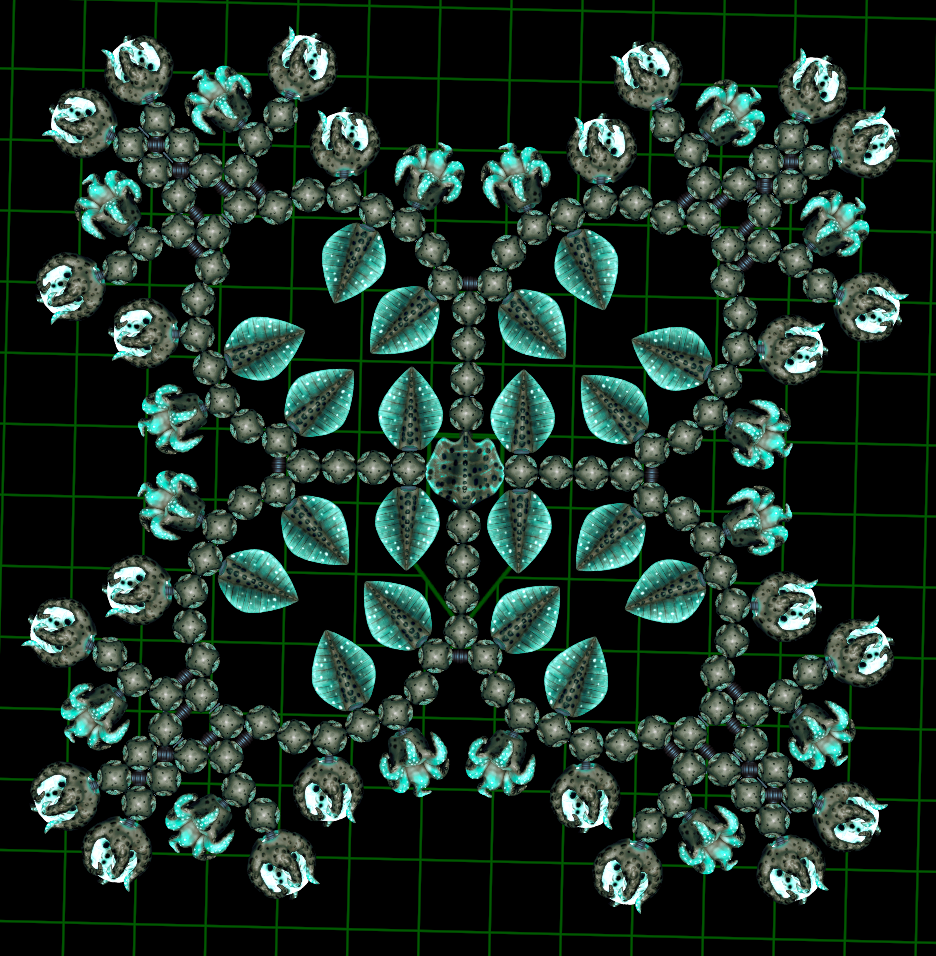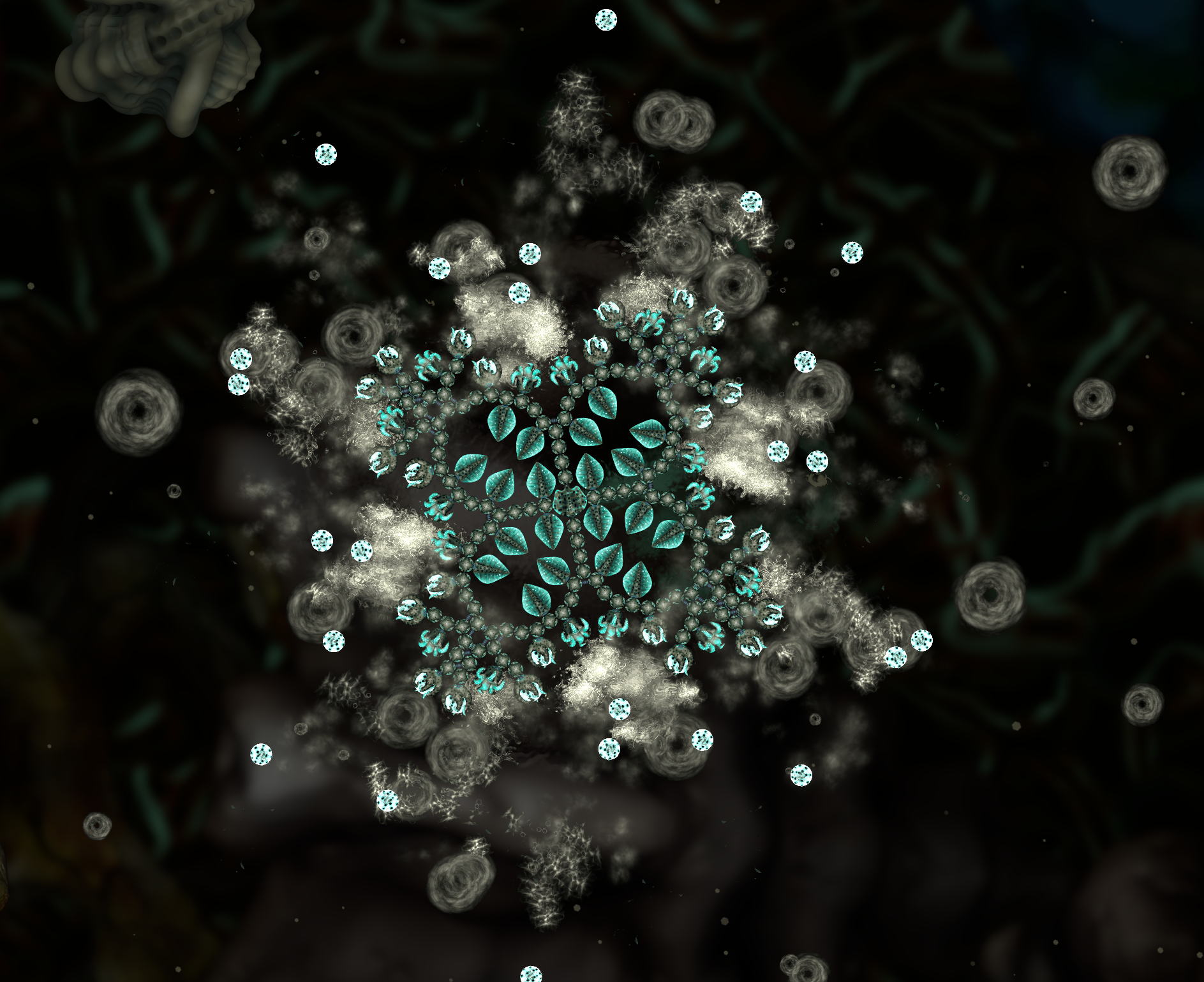Is this topic dead? I hope not.
G u e s s w h a t ?
I am finally back, again. Long absences from here seem to be a recurring thing for me...
Anywho, let's get right into it.

Ever since the discovery of a new species (The nomadic Vagorus), I have been hard at work studying (read: conducting extensive research on) its various parts, as well as the morphology of typical specimens. What you see above is a theoretical* construction of a "Big Bad" from this new species. Boasting a very symmetrical form evocative of a modern quadcopter, the Drifting Destroyer is well-protected on all sides by its arrangements of Burstopod and Twister zooids. The combined effort of these zooids make this thing nigh-unapproachable:
It hurls vortexes and Burstopod bombs all around, making it difficult to assault it without getting stuck in a vortex with a couple of bombs. Due to its drifting nature, this specimen would theoretically prey only on small organisms. Hence, its method of attack is not well-suited for taking down siphonophores as-large-as or larger-than itself. On the flipside, its method works like a charm against small creatures; rendering them helpless with bomb-laced vortexes.
Finally, let's talk about its movement. This species' movement zooids are extremely versatile: it gives anything it is attached to a turning speed advantage that almost no other movement zooid can offer (a close second is the Turbine of the Cra'than). Despite it's symmetry, the above creature actually has a method of taking advantage of its speedy turning: It can help itself get unstuck from obstacles that it encounters while drifting in the currents!
Welp, that does it from me for now. Look forward to more stuff from me in the future. I'll give you a little hint as to what's coming: I've been tampering with a Frakir specimen in my downtime...
* No specimens of this species ever grew to a large size, possibly for ease of drifting. However, if a specimen ever achieved a large-yet-efficient form, this would most likely be the result. Said theoretical creature above was created using a combination of simulations and genetic manipulation.

